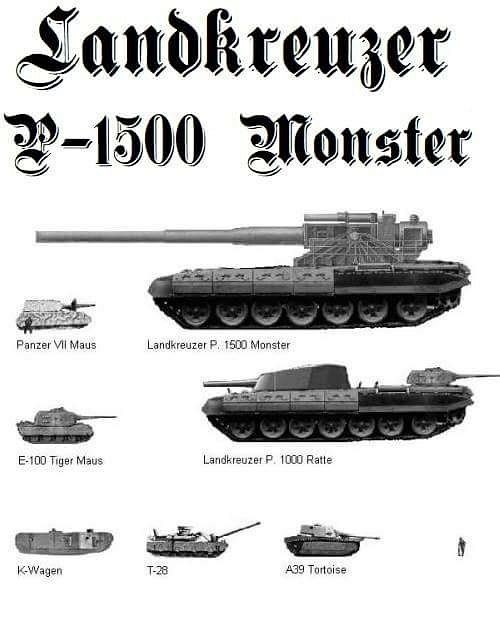The Landkreuzer P 1500 Monster was a German pre-prototype super-heavy self-propelled gun designed during World War II, representing the apex of the German extreme artillery designs.[citation needed]
 P 1500 monster 800mm shell
P 1500 monster 800mm shell

P1500 campared to P 1000 and other tanks
 P 1500 monster 800mm shell
P 1500 monster 800mm shell
P1500 campared to P 1000 and other tanks
